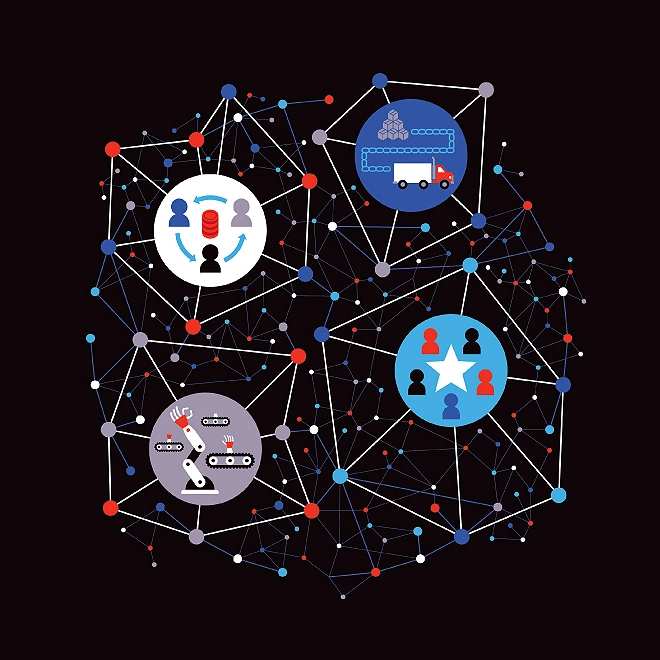The jobs are here, but where are the people?
Key findings from the 2018 Deloitte and The Manufacturing Institute skills gap and future of work study
Executive summary
THE US manufacturing industry continues to gain momentum. Job openings have been growing at double-digit rates since mid-2017, and are nearing the historical peak recorded in 2001.1 In this dynamic manufacturing environment, Deloitte and The Manufacturing Institute launched their fourth skills gap study, to reevaluate their prior projections and move the conversation forward on today’s hiring environment and the future of manufacturing work. The results appear to highlight a widening gap between the jobs that need to be filled and the skilled talent pool capable of filling them.
The search for skilled talent—ranked as the No. 1 driver of manufacturing competitiveness by global manufacturing executives2—appears to be at a critical level. In fact, Deloitte and The Manufacturing Institute research reveals an unprecedented majority (89 percent) of executives agree there is a talent shortage in the US manufacturing sector, 5 percent higher than 2015 results.3
The talent shortage seems to be exacerbated by two factors. First, the US economy is currently in the midst of the second-longest expansion in history, and the manufacturing industry is part of this expansion. To support continued growth, based on our analysis, Deloitte expects the number of new jobs in manufacturing to accelerate and grow by 1.96 million workers by 2028 (see figure 1).4 Second, the manufacturing industry could face a demographic challenge. Despite the trend of delaying retirement—according to the most recent Gallup poll, the average age of retirement is now 66 years—more than 2.6 million baby boomers are expected to retire from manufacturing jobs over the next decade.5 And, more than half of the open jobs in 2028 (2.4 million) could remain unfilled because of the following top reasons identified by executives:
- Shifting skill sets due to the introduction of advanced technologies
- Misperceptions of manufacturing jobs
- Retirement of baby boomers6
The 2018 study shows most companies expect job categories where they have rated the current shortage “very high”—digital talent, skilled production, operational managers—to triple in terms of difficulty in filling positions in the next three years. Even at present, many of these jobs are taking longer to fill, stretching out to months of time where a company is missing key workforce to deliver open orders, expand production, or respond to customer needs.7

What risk does the skills shortage pose to the economy?
The impact of not filling job openings and not having the right skill set in the workforce to respond to market demands can be felt in a number of ways for manufacturers. For some, it might be the inability to respond to new market opportunities. For others, it may be the failure to support innovation and new product development. In the 2018 study, our respondents identified the top business impact of pervasive job openings to be their inability to maintain or increase production levels to satisfy growing customer demands. Sixty percent of respondents ranked the skills shortage as having a high or very high impact on productivity over the next three years.8 Using a baseline economic projection created by Deloitte’s economic team, which assumes continued growth of US manufacturing GDP in the coming decade, the study reveals a potential risk of US$454 billion in additional manufacturing value added in 2028, if the industry is unable to fill the anticipated open jobs.

Understanding the shifting skills that could support manufacturing in the coming decade
In today’s environment of near-historic low unemployment, many manufacturers are straining to meet the demands of increased output. Even more challenging could be the task of understanding what jobs will look like in the future and the skills needed to perform them. Forty-seven percent of today’s jobs might be gone in the next 10 years, including 20 percent of assembler jobs in manufacturing.9 But the overall headcount is expected to increase, meaning these jobs would transition into other skills, likely infused with technology.
Manufacturing executives stated the top five skill sets expected to increase significantly in the coming three years due to the influx of automation and advanced technologies are: technology/computer skills, digital skills, programming skills for robots/automation, working with tools and technology, and critical thinking skills. The industry seems to be quickly moving to a future where automation is embedded across functions, and humans may need to work alongside robots and machines to deliver higher productivity. So, how can manufacturers solve the challenge of filling current open jobs, while also preparing for a future workforce that is expected to have different skills, largely influenced by the Fourth Industrial Revolution?
As part of the 2018 skills gap and future of work in manufacturing study, we have identified a number of pathways that exemplify the way jobs and skills could change in the coming years. As one manufacturing executive noted, “We want to right-size our workforce, with the right skills, and give them the tools and training they need to be successful.”
To help visualize the shifting skills and jobs for which manufacturers should prepare, Deloitte has created a series of future work personas in manufacturing that describe what jobs could look like in, say, 2025. We have chosen to describe these possible future jobs from the vantage point of the workers themselves, exploring how their work has changed, what kinds of skills and career pathways they have, the types of digital tools that assist them in their work, and what a normal day on the job looks like. Bringing these future jobs to life can help business leaders, workers, educators, and policymakers shape their vision and spark conversations around what needs to change to make this happen. Read more about the first persona.
Toward a long-term strategy for supporting future jobs in manufacturing
Many manufacturers find themselves forced to take more aggressive measures to fill open jobs in the short term. The 2018 study identified a 15 percent increase in the number of companies offering higher pay to skilled workers compared with 2015. Today, 83 percent of executives offer higher pay to attract and/or retain skilled workers. But, on the flip side, while this gets skilled workers in the door, it does not guarantee they will stay. In fact, the study shows that 66 percent of executives see skilled workers leave to accept outside positions that offer higher pay.10 In addition to higher pay and signing bonuses, some manufacturers have also relaxed certain hiring requirements and moved production to domestic job shops to keep pace with the rising orders many are seeing. Unfortunately, none of these approaches will likely solve the industry’s skills shortage in the longer term.
As the industry considers a more deliberate path forward, Deloitte and the Manufacturing Institute have identified a number of strategic approaches that manufacturers could take to influence a more positive employment future. These considerations include:
- Taking advantage of the emerging workforce ecosystem
- Turning toward automation to supplement human jobs that are going unfilled
- Tapping into the resources from the retiring generation of baby boomers
- Developing in-house training that engages a multigeneration workforce
- Creating public–private partnerships
- Bolstering apprenticeship programs
Each of these approaches is explored in detail in the 2018 Deloitte and The Manufacturing Institute skills gap and future of work study. The future could be bright for US manufacturing, but it will require a skilled workforce to deliver continued growth and remain competitive on the global stage.
About the study
The United States is experiencing near-historic low unemployment amid an extended period of economic expansion. The skills shortage that Deloitte and The Manufacturing Institute have been tracking for the past 17 years continues to swell, threatening to impede the current growth in the US manufacturing industry. This fourth skills gap study explores the depths of today's talent shortage in manufacturing, how jobs are changing due to technology and automation, and what measures manufacturers could take to solve today's shortage while preparing their future workforce for success.



